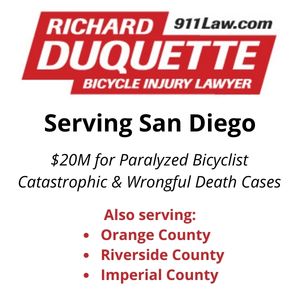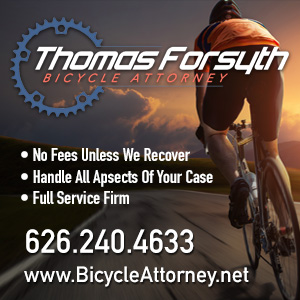Maybe the problem isn’t the bike plan. Maybe it’s trying to create a single plan that encompasses the entire city of Los Angeles.
Recently, I came across a Chicago Tribune story about a study by the League of Illinois Bicyclists. In it, they looked at 46 roads in the Chicago area that had recently been reconstructed, to evaluate them for pedestrian and bicycle travel.
What they found was the projects that rated highest were the ones that had been planned on the local level; the projects that rated lowest were managed by the state Department of Transportation. The clear conclusion was that people on the local level had a better understanding of the needs of local users than those at the state level, where the focus tended to be strictly on vehicular traffic.
Shortly after reading that, I came across this article written for Streetsblog by Siel of Green LA Girl, which seemed to dovetail neatly with the Tribune story.
In it, she suggests that cyclists could consider the bike plan on a neighborhood by neighborhood basis, rather than trying to tackle the entire 212 page document at once:
Byrne’s suggestion got me thinking: Would it be possible to get multiple bike plans going in various L.A. neighborhoods — with shorter drafts of the plans that cyclists in that area could get through more easily? Might that get cyclists more engaged and active in the areas that they live or work in?
It makes perfect sense.
I know Westwood, Century City and surrounding areas like the back of my hand. I can tell you what street would make a great bike boulevard, and where a minor change in signage would make a big improvement in ridability.
But I don’t know a damn thing about riding through Hollywood, the Eastside or the Valley.
So maybe the solution is to follow Siel’s suggestion. Let’s take the proposed bike plan apart, and look at it one neighborhood at a time, by the people who live and work along and ride on those streets. And then make our own map, using the proposed plan as a starting point — because there are some good ideas in there, watered-down and obscured though they may be.
Then we can put it back together, adding one neighborhood to the next, until we’ve built our own plan for the city from the streets up, rather than LADOT down.
And it starts this Saturday.
The LA Bike Working Group is inviting cyclists to meet at the Hollywood Adventist Church, 1711 N. Van Ness Ave., in Hollywood, starting at 2p — note the new time and location, which has changed from the ones shown in the link.
It’s your opportunity to break into groups and tackle a specific section of the plan, page by page, by cyclists for cyclists. And try to come up with something that will work for riders, rather than pushing us aside in favor of moving more motor vehicles.
I’ll let Matt from No Whip take it from here, since he’s written a better call to arms than I ever could:
Come to the LA Bike Working Group meeting this Saturday at (2pm at the Hollywood Adventist Church) as we work to improve the plan. 1000 come to a social ride, but we’re lucky to get 10 to a meeting. You can do both and you can influence how policy is written in our city. More info here and facebook is here.
Write a comment about the 2009 Bike Plan here: Los Angeles 2009 Bicycle Plan. Yes, they do read and note them. Imagine if we generated 10,000 responses demanding more bicycle infrastructure and actual implementation! You should review it and form your own opinions, but the most popular arguments are: lack of vision, no real plan for implementation and cyclists’ concerns are secondary. If you only read one article, read L.A.’s Draft Bikeway Plan: Non-Committal, Sloppy and Perhaps Illegal by Joe Linton.
Get involved with a campaign. There’s C.I.C.L.E, the Los Angeles Bicycle Coalition, and even Midnight Ridazz has some advocacy plans. And don’t forget that the Department of DIY always has open positions (DIY bike lanes, DIY park).
Read. Seriously. We need substance beyond rhetoric and need to be educated on the case for bicycles.
Speak with cyclists, friends, activists. These ideas and events need to be given life. No one is going to do it for us. Tell others about what is going on.
Donate money. My least favorite of the actions. We need money for all that we do, but we’d prefer you and your energy. Donating money creates the mentality that others will do it for you, but those most invested in this have spent hundreds if not thousands of dollars of their own money because of their passion. Buy an activist a burrito!
Learn more and offer comments at labikeplan.com.
………
Riverside decides to let local cyclists develop their bike plan; what a novel concept. The latest assault by young Hollywood on the people of L.A.: a TV star is accused of a drunken collision with a 17 year old cyclist. L.A. drivers are enough to make a grown woman cry. The hit-and-run plague hits our neighbor to the south. A truck driver in San Mateo had no idea he ran over and killed a cyclist. My friends at West Seattle Blog ask why put a bike lane on a crappy bumpy road? A Columbus, OH rider asks why don’t cyclists follow the law? A Chicago bike lawyer offers tips on what to do after a cycling accident. Portland cyclists reach an agreement with local police for fairer enforcement. Finally, the ultimate Halloween decoration — a man commits suicide on his balcony in the Marina, then lies in plan sight for four days because the neighbors assume he’s a Halloween display.



 Then there’s the way they end abruptly,
Then there’s the way they end abruptly,  However, that means cyclists riding on the opposite side of the road often have to make a decision whether to obey the law, or common sense, when faced with a red light, with a clear lane in front of them and no cross traffic from any direction.
However, that means cyclists riding on the opposite side of the road often have to make a decision whether to obey the law, or common sense, when faced with a red light, with a clear lane in front of them and no cross traffic from any direction. To make matters worse, just as the hardest part of the climb begins, there’s a three-way stop at the intersection where Westholme, Glenmont and Le Conte come together.
To make matters worse, just as the hardest part of the climb begins, there’s a three-way stop at the intersection where Westholme, Glenmont and Le Conte come together. LADOT could address the problem by adding another sign below the stop sign, reading “bikes yield” or “except for bikes.”
LADOT could address the problem by adding another sign below the stop sign, reading “bikes yield” or “except for bikes.”





